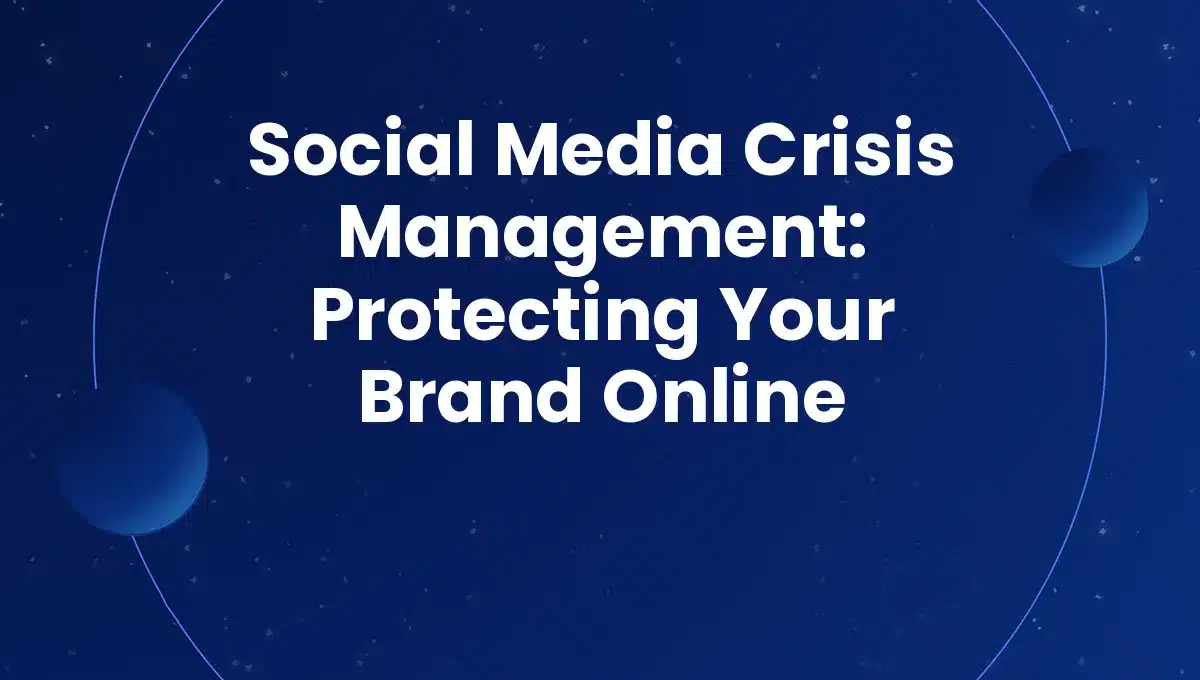Social Media Crisis Management: Protecting Your Brand Online
In today’s hyperconnected world, a single tweet, post, or comment can provoke a whirlwind that impacts your brand’s reputation overnight. Whether you’re a brand new startup or an established business,navigating the treacherous waters of social media crises is not just a skill; it’s a necessity. At cham Agency, we believe that proactive social media crisis management is an integral part of your digital marketing strategy.It’s not merely about damage control but about crafting a robust defense strategy that can safeguard your brand’s hard-earned reputation.
Understanding the Landscape: What Is a Social Media Crisis?
First, let’s define what qualifies as a social media crisis. Is it when you receive a couple of negative comments? Not quiet. A social media crisis refers to a notable event that can disrupt your business’s online presence, potentially resulting in tangible damage to brand perception, customer loyalty, and ultimately, sales. This could stem from controversial comments, product recalls, or even external events like political movements that your brand inadvertently gets associated with.
Real-World Example: United Airlines
Remember the infamous incident with United Airlines where a passenger was forcibly removed from an overbooked flight? The scenario spiraled into a full-blown crisis, fueled by viral videos on Twitter and Facebook. Instead of addressing concerns swiftly, United’s initial response was tepid, further aggravating the situation and leading to billions in lost market value. The lesson? Ignoring or mishandling a crisis can permanently tarnish your brand’s image.
The Proactive Approach: Preparing for a Crisis
1. Develop a Crisis Management Plan
Let’s face it: when a crisis hits, you won’t have the luxury of time to plan your response.Start today by drafting a extensive social media crisis management plan. This plan should include:
- Crisis Identification and Classification: What constitutes a crisis for your brand?
- Response Protocols: Who will respond,how they will respond,and in what timeframe?
- Key Messaging: Crafting appropriate responses that reflect your brand’s voice.
- Monitoring Tools: Using tools like Hootsuite or Brandwatch to keep an ear to the ground.
2. Assemble Your Response Team
Form a crisis management team that includes members from PR, customer service, and executive leadership. This cross-functional team will facilitate quick, informed decisions when a crisis strikes.
3. Social Media Monitoring
Implement a real-time monitoring strategy with social listening tools. Knowing what peopel are saying about you online allows you to act swiftly.According to a study from Sprout Social, consumers expect a response from brands within four hours of posting a complaint. Don’t leave them hanging!
Responding with Confidence: The First 24 Hours
1. Acknowledge the Issue
Your first step in crisis management should always be to acknowledge the issue. Silence or defensiveness can damage trust. A simple,sincere acknowledgment can open up dialogue and show customers that you’re listening.
For example, during a public relations crisis, a fast-food chain made the mistake of waiting too long before addressing a backlash over a misleading advertisement.However, when they finally issued an apology that conveyed understanding and accountability, they were able to gradually restore customer faith.
2. communicate Transparently
Transparency should be your guiding star. When addressing your audience, make sure to provide facts, avoid jargon, and communicate your intention to resolve the issue.Use clear language: “We understand there’s an error with our product and we’re committed to making it right.”
3.Use the Right Platforms
Choose the appropriate platform to communicate your message. While Twitter might be the place for quick updates, a detailed response could be more suitable for your website or Facebook page, where you can engage more deeply with your audience.
Post-Crisis Recovery: Rebuilding Trust That’s Lasting
1. Learn and Improve
Every crisis presents a learning prospect. After the dust settles, conduct a thorough analysis of what happened, how you responded, and the implications of your actions. This will equip you with valuable insights for future scenarios.
2.Engage Your Audience
Rebuilding trust means involving your audience in the recovery process. Share behind-the-scenes content about how you’re improving and encourage reviews, testimonials, or even engagement through polls. Invite them into the conversation to show that you value their opinions.
3. Strengthen Your Brand Image
Turn a crisis into an opportunity to demonstrate your brand values. Whether it’s through philanthropy, environmental initiatives, or community engagement, make your audience see the real you. Taco Bell, after receiving backlash for a social media post, doubled down on its community initiatives, which substantially helped mend its reputation.
Conclusion: Mastering Social Media Crisis Management
in the fast-paced world of digital marketing, being prepared for the unexpected is not just wise-it’s essential. social media crises may seem like a daunting challenge, but with a proactive approach and an efficient team ready to tackle any situation, you can not only protect your brand but also potentially transform challenges into compelling stories of resilience and growth.
At Cham Agency, we’re not just about putting out fires; we’re about equipping you with the tools, strategies, and insights to prevent them in the first place.brands that commit to excellence in crisis management build stronger, more resilient relationships with their customers. So roll up your sleeves, bolster your strategy, and let’s ensure your brand not only survives but thrives online.
Remember: The digital landscape is unpredictable, but with the right mindset and strategies, you’ll not only weather the storm-you’ll emerge stronger than ever. Bookmark this guide,keep it handy,and make sure you’re ready to turn crisis into opportunity!





